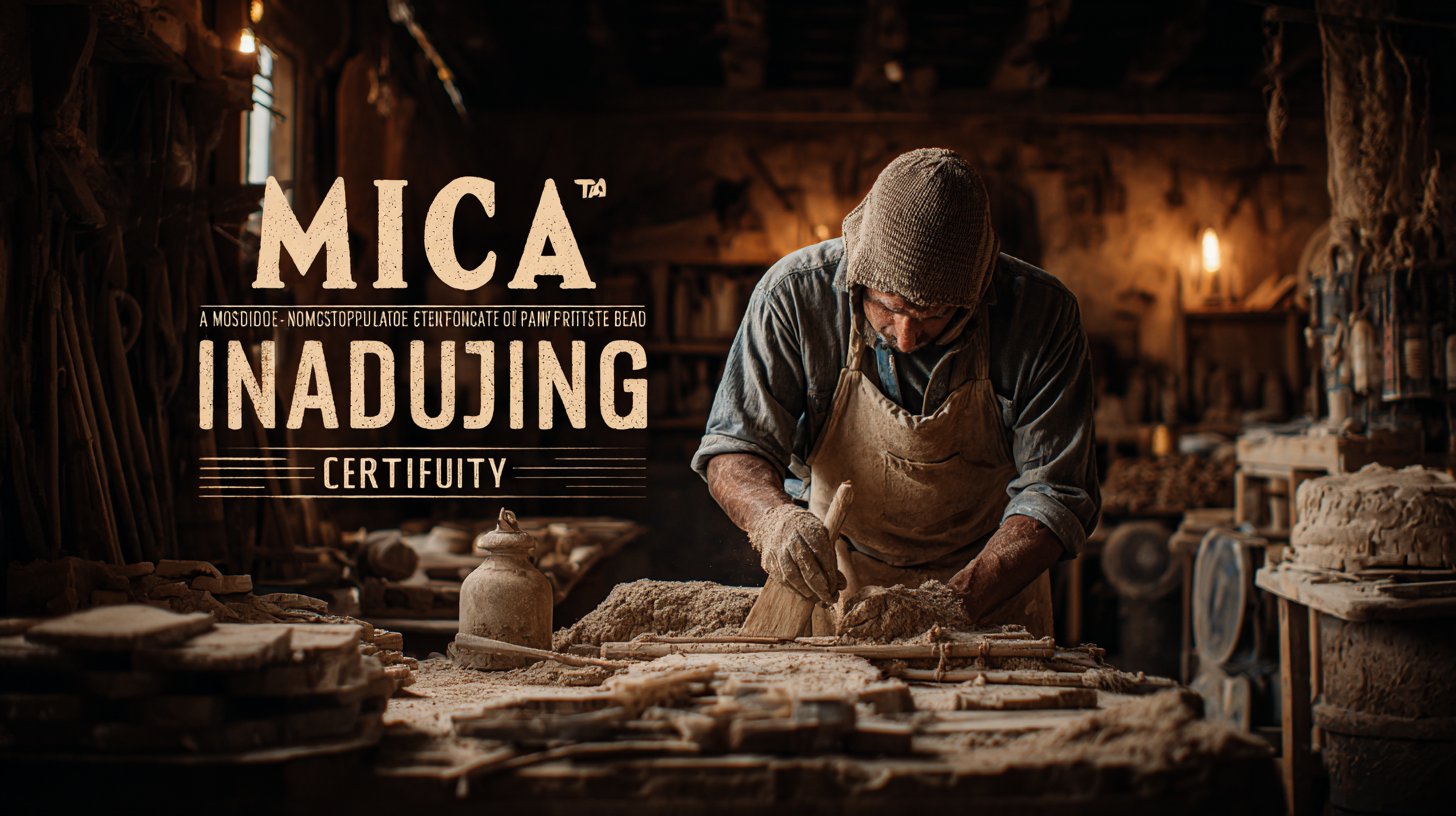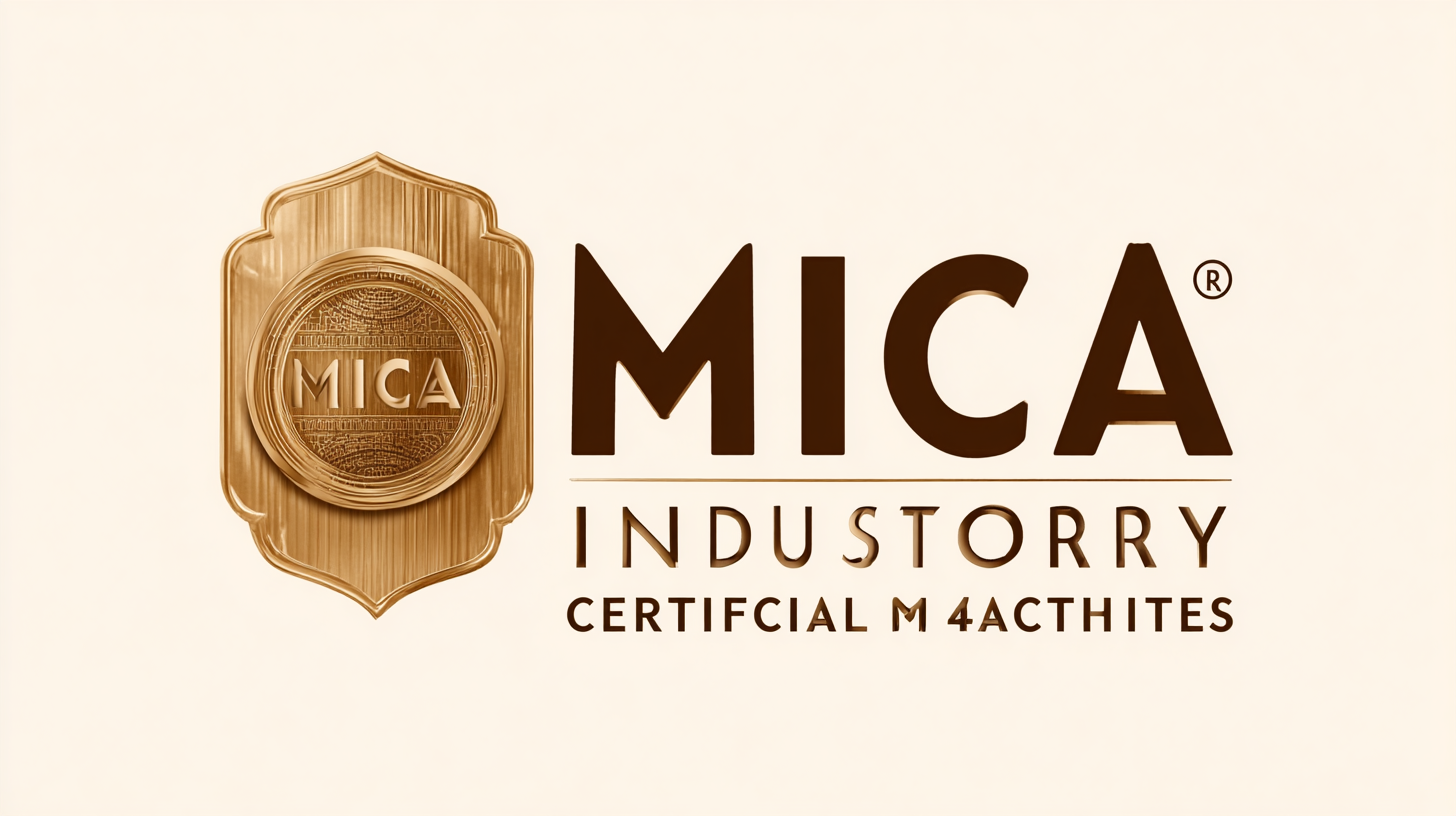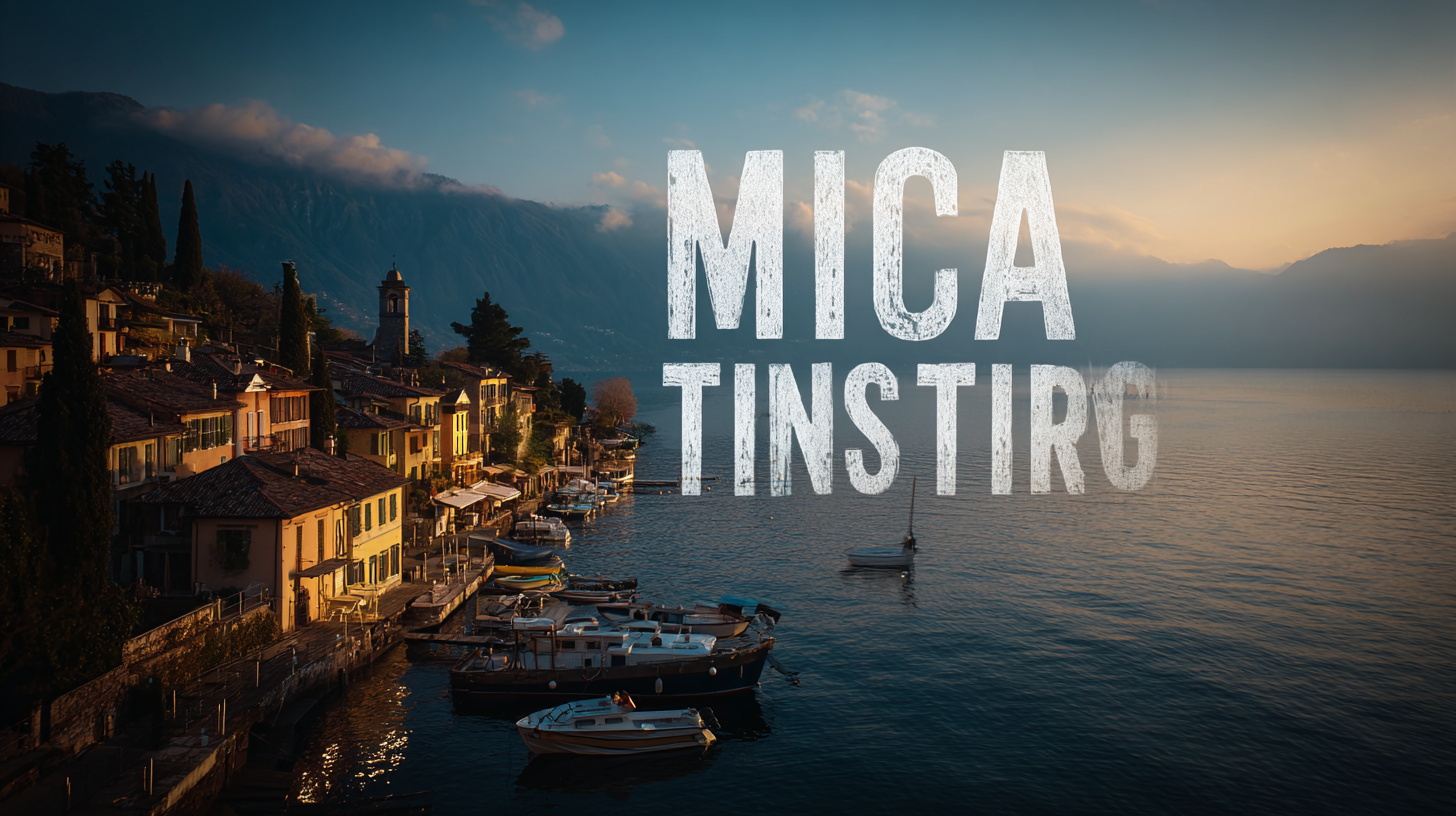QR Code
About Us
Products
Contact Us

Phone

Fax
0086-574-87527773

E-mail

Address
No 432 Zhenhai Middle Road, Luotuo Street, Zhenhai District, Ningbo City, Zhejiang China
The Mica Industry, a critical player in the global marketplace, has been experiencing significant transformations driven by demand for eco-friendly and sustainable materials. According to a report by Market Research Future, the mica market is projected to grow at a compound annual growth rate (CAGR) of 4.8% from 2021 to 2028, reaching an estimated value of $1.8 billion by the end of the forecast period. This growth is primarily fueled by its extensive applications in industries such as cosmetics, electronics, and automotive. However, businesses engaged in the import-export of mica face numerous regulatory challenges, making understanding certifications crucial for compliance and market entry. This comprehensive guide aims to equip stakeholders with essential knowledge about import-export certifications, emphasizing why mastering these aspects is vital for success in the thriving mica industry.

As the mica industry evolves, several trends are expected to shape its landscape by 2025. A notable observation is the anticipated growth in Australia’s mica market, with a projected compound annual growth rate (CAGR) of +1.6% by 2035. This growth signals an increasing demand for mica, driven by various applications in industries such as cosmetics, electronics, and automotive sectors.
Simultaneously, global trends in electric vehicles (EVs) indicate a growing need for fire protection materials, highlighting the importance of safety in manufacturing. Although the occurrence of fires in EVs is less frequent compared to traditional combustion vehicles, material opportunities in this sector are rising. It is essential for companies within the mica industry to adapt and innovate, positioning themselves strategically to meet these emerging demands as the market landscape shifts toward sustainability and safety.
Looking towards the future, industries are likely to see an increased integration of regulatory frameworks and compliance in response to shifting consumer expectations and safety standards. This evolving regulatory environment will not only affect how mica is sourced and utilized but will also impact trading practices on a global scale, making it imperative for stakeholders to stay ahead of these trends.
The mica industry, with a global market projected to reach $1.39 billion by 2026, requires stringent adherence to import-export certifications to ensure compliance and build trust. Essential certifications such as ISO 9001 for quality management and the REACH compliance for protecting human and environmental health are paramount for businesses aiming to thrive in international trade. These certifications not only facilitate smoother transactions but also enhance the credibility of mica products in a competitive market.
**Tip:** Always stay updated with the latest certification requirements specific to your target countries. Regularly review the official websites of relevant trade bodies to ensure compliance with both local and international standards.
Moreover, obtaining ethical sourcing certifications can significantly bolster your business reputation. As consumers increasingly demand transparency, certifications like Fair Trade can help businesses stand out. The market for ethically sourced mica has been growing, with a reported 22% increase in consumer interest over the past year. Ensuring that your mica supply chain adheres to these ethical standards can lead to expanded market opportunities.
**Tip:** Engage with industry networks and forums to gather insights into certification processes, as well as to share best practices with fellow exporters. Networking can provide invaluable resources and support throughout your certification journey.
Navigating the regulatory requirements in the global mica trade is crucial for businesses aiming to ensure compliance and sustainability. The mica industry, valued at approximately $1 billion globally, faces intense scrutiny due to ethical concerns surrounding child labor and environmental impact. According to a report by the Responsible Mica Initiative, nearly 25% of mica sourced from India is linked to unethical practices. To engage responsibly in this market, companies must obtain the necessary import-export certifications and adhere to international standards such as the OECD Due Diligence Guidance for Responsible Supply Chains.
Understanding country-specific regulations is essential for import-export operations in the mica sector. For example, the European Union has strict regulations regarding the sourcing of mica, pushing suppliers to provide transparency in their supply chains. A comprehensive analysis from the International Trade Centre indicates that about 70% of companies in the mica trade report difficulties in navigating these regulatory landscapes. By investing in trade certifications like ISO compliance and engaging with organizations focused on ethical sourcing, businesses can not only fulfill legal requirements but also enhance their brand reputation in a market increasingly driven by ethical considerations.

When venturing into the mica export market, understanding the certification process is crucial for compliance and success. Obtaining mica export certifications involves navigating various regulatory frameworks that differ across countries. The first step is to familiarize yourself with the specific requirements of the importing country, which often includes documentation concerning product quality, safety standards, and environmental regulations. Start by contacting trade organizations or export promotion agencies that can guide you through the process specific to the mica industry.
**Tip:** Maintain an organized file of all necessary documents, including quality assurance certificates and supplier information, to streamline the certification process.
Next, consider engaging with verified industry consultants or legal advisors. They can provide detailed insights into the nuances of the certification process and help you avoid common pitfalls that could delay your export activities. Depending on the market, certifications such as ISO or other recognized industry standards might be necessary for successfully exporting mica.
**Tip:** Join industry associations related to mica to network with experienced exporters who can share invaluable advice and resources for certification.
In the mica industry, sustainable sourcing is not just a trend but a necessity driven by ethical and environmental considerations. A recent report by the Responsible Mica Initiative indicates that approximately 25% of the world’s mica supply comes from unregulated mines, where labor conditions are often unsafe and exploitative. Implementing best practices for sustainable sourcing can significantly improve the integrity of the mica supply chain. Companies are encouraged to engage in partnerships with local communities, ensuring fair labor practices and environmental stewardship while fostering transparent procurement processes.

Additionally, leveraging certifications such as the OECD Due Diligence Guidance can help stakeholders verify that their mica supply is ethically sourced. According to industry standards, businesses that adhere to these certifications not only bolster their brand reputation but also minimize the risk of supply chain disruptions caused by reputational damages or regulatory scrutiny. Data suggests that companies actively investing in sustainable sourcing strategies can see a 20% increase in consumer trust, highlighting the economic benefits of responsible sourcing beyond the ethical implications.
By prioritizing sustainable practices, the mica industry can pave the way for a more equitable and responsible future.


0086-574-87527773


No 432 Zhenhai Middle Road, Luotuo Street, Zhenhai District, Ningbo City, Zhejiang China
Copyright © 2015-2024 Ningbo Nafty Sealing Materials Co., Ltd. All Rights Reserved.
| | | XML | Privacy Policy |
TradeManager
Skype
VKontakte
